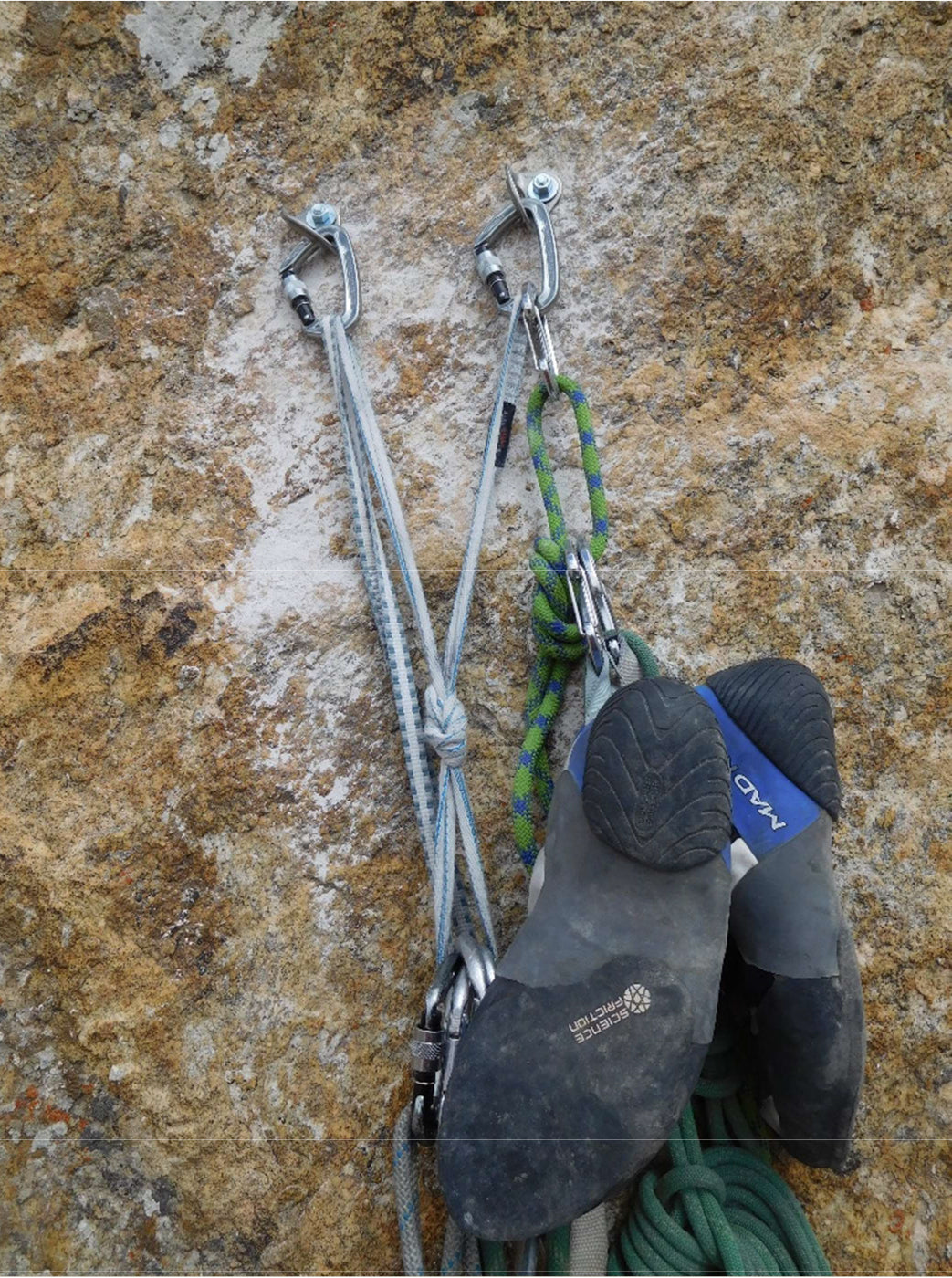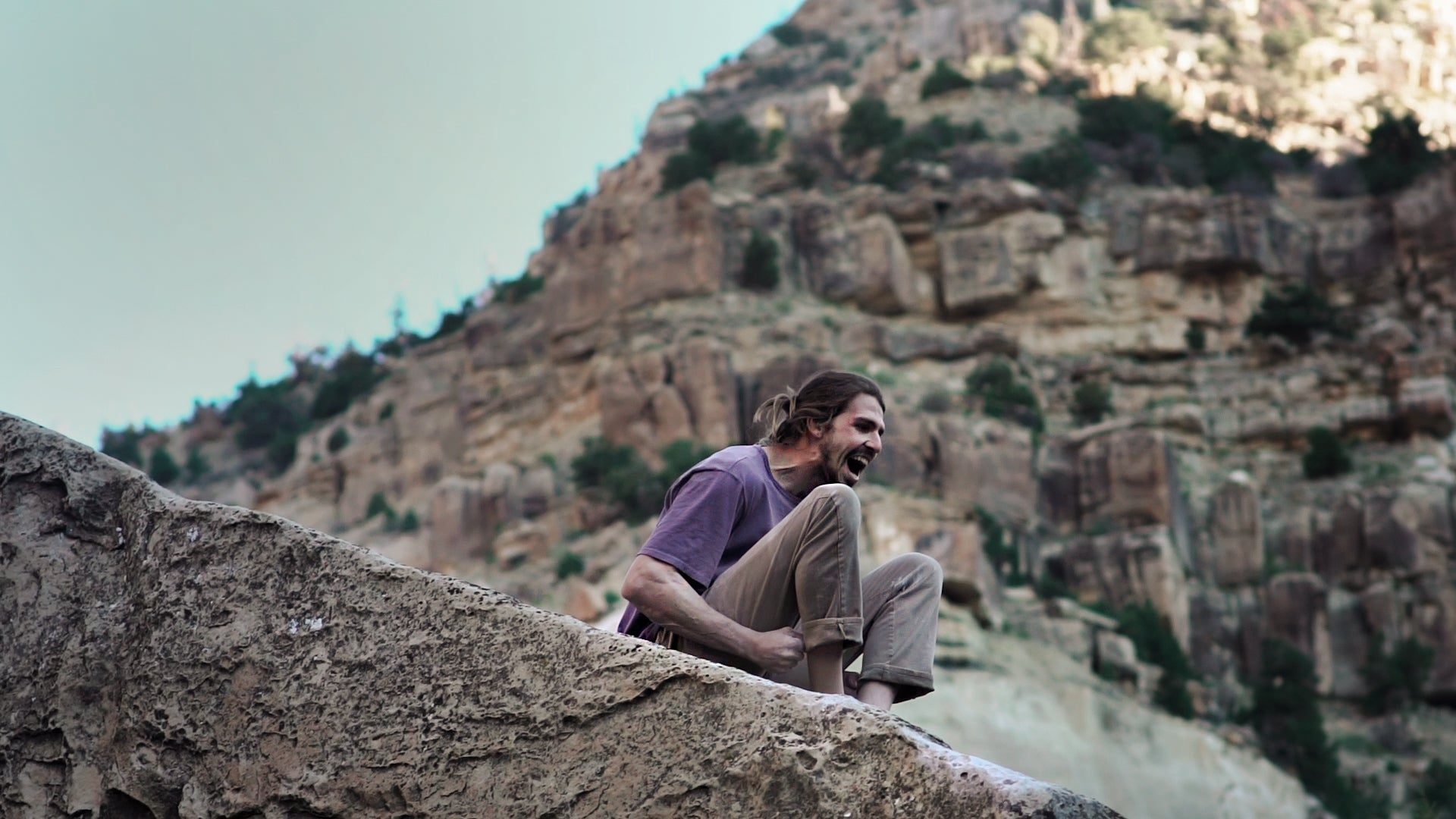
Trip Report: India July/August 2019 by Todd Swain
Above: Mad Rock gear on The Frolicking Yak (5.10+).
After talking with a friend of ours in Bishop, California, Andy Selters, we knew the Rongdo Valley was a place we should check out. The valley, which is located in northern India, had all the attributes we love – an exotic country, obscure location and first ascent potential.
Andy was a part of the first western expedition into the valley in 2012. He was so struck by the beauty and friendly local residents, that he has been back twice. The valley is located in the northern province of Ladakh and sits very near the contested borders with China and Pakistan. As such, permits are required for foreigners to enter the area. Andy provided us with all sorts of logistical information and showed us some of his pictures of the area. Prior to our visit, only five western teams had ever visited the valley and all were focused on virgin summits. Our trip would be the first to explore the rock climbing potential.
My wife, Donette, and I flew into India’s capital, Delhi, and then took another flight to Leh, the capital of Ladakh. Leh is located at about 11,000 feet in elevation and it is there that we met the staff of our expedition outfitter, Rimo Expeditions. After a couple days getting organized, our expedition of four (Donette, me, Nepali cook Dhan Kumar and Nepali cook’s helper Basdhan), left Leh on the 7th of July and drove in two jeeps over an 18,000-foot pass and down into the Shyok Valley. That afternoon, we arrived in Rongdo Village, at the confluence of the Rongdo and Shyok Valleys. We off-loaded our gear in a meadow by the village and after setting up tents, went in search of the villagers who knew Andy.

Above: Barley fields in Rongdo Village.
Nine families and a total of about 55 people live in Rongdo Village. The village has been inhabited for perhaps 2,000 years and only those roughly 40 or younger have ever been out of the Shyok Valley or to Leh. This is a remote area and the Rongdo villagers have not yet been fully exposed to western culture. The villagers flourish by growing barley and other crops and herding cattle, goats, sheep and yaks. We quickly found villagers who knew Andy and in short order, we were invited into homes for tea.
Our outfitter had arranged for the villagers to use their donkeys to haul all our equipment and food from Rongdo (elevation 10,000 feet) to our basecamp at 14,000 feet. Ladakh is very arid and unless you are right near water or looking up at snow-covered peaks, you could easily think you are in Death Valley. The two-day hike up the Rongdo drainage felt like we were in the desert in June – it was wilting. Our first night was spent at a summer herding camp called Daksa at 13,000 feet. When we awoke the next day at 6am, the sun was already blazing. A couple objectives that we had seen in Andy’s photographs were in the sun by 7am and it was obvious they would be too hot to climb on.

Above: The summer herding camp of Daksa in the Rongdo Valley.
I spent a day examining the various cliffs in the valley. While it is true that the valley holds a huge amount of rock, much of it is very fractured and most (at least in early July) is in the sun. The cliff we choose as an objective was solid and in the shade until about 10:30am. We were able to position our basecamp only about 300 yards from the cliff, making the daily commute fairly painless. On July 13th (12 days after leaving California) we actually set foot on rock. By choosing the solid, compact rock over the flaky, exfoliated sections of cliff, we knew we were going to be placing a lot of bolts. Doing this on the lead above 14,000 feet takes some effort. Over the next three weeks, we established two 500-foot routes. Because of the heat, most days we were cooked by 1:30pm. During our stay in the valley, we had four days of heavy rain, a few days of afternoon showers and three days of perfect High Sierra weather.

Above: Donette on pitch 4 of The Cavorting Kid (5.10).
The first route we completed, The Cavorting Kid (5.10), was named after a small goat we saw in Daksa. The second and fourth pitches of the route yielded fantastic Tuolumne-like bolted face climbing. Our second climb, The Frolicking Yak (5.10+), had equally great face climbing and a namesake in Daksa. Both routes are safely equipped with Mad Rock bolt hangers. A dozen or so quickdraws, a light rack and perhaps an oxygen bottle should get you up either route!
Following our stay in Rongdo, we met a crew of local climbers at the small climbing gym in Leh. They took us to their local crag in nearby Shey, where we repeated some excellent lines and did a few new routes. Donette and I then did a week-long road trip generally to the south of Leh, checking out other areas for rock climbing potential. We drove about 500 miles (most of it on gravel roads) and found some areas with great potential. A second trip to Ladakh would definitely involve developing the areas we found on our recon trip!
Our final week in India was spent in Delhi. We visited some truly incredible cultural sites like the Taj Mahal and Red Fort. We also met some local climbers and visited a brand new, state of the art climbing gym. One of the great folks we met, Mohit Oberoi, owns a climbing shop in Delhi, Adventure 18. Mohit started climbing in the late 1980s, represented India at a World Cup event in 1991 and has climbed at about a dozen areas on both coasts of the US. He and his family were a delight to spend time with.
This was our first trip to India. We can’t wait to go back!

Above: Donette and local villagers checking out the climbing gear.

